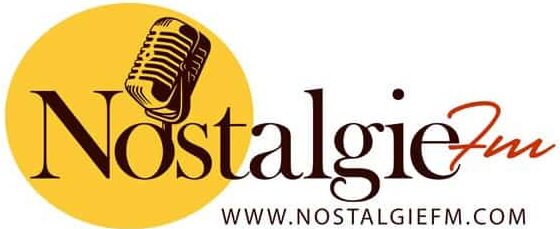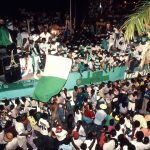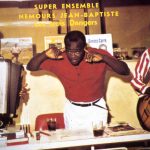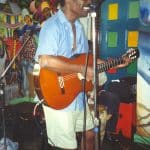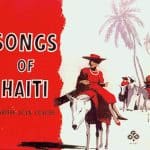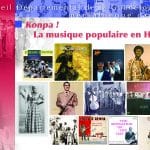I remember Marion Léandre as a hard worker
. It has been impossible, since 1974, not to recall the memories of “our” World Cup when a new edition arrives.
By Patrice Dumont
November 28, 2022
Le Nouvelliste
It has been impossible, since 1974, not to recall the memories of “our” World Cup when a new edition arrives. Even if Haitian football were splendid today, the mark left on the minds and hearts by the Haitian world champions of 1974 would still remain indelible. Eight are dead, ten live abroad, four reside in Port-au-Prince: Serge Ducoste, Guy Saint-Vil, Philippe Vorbe, Marion Léandre. I owe them all a debt of gratitude. Why is it the latter that I thought of the most as this World Cup approaches? Through work, Marion overcame difficulties that extinguish ordinary souls. Who says work says merit. Thus, I am among a dozen football personalities who had very seriously planned to offer her a jubilee feast in Port-au-Prince this past November 12. A moment of fraternity and solidarity forbidden by the gangs. It is driven by a desperate idea of compensation for this failure, oh so involuntary, that I attempt to draw this portrait of Marion Léandre.
Born in Cap-Haïtien on May 9, 1945 in Cap-Haïtien, the child and adolescent Marion was far from the glitter of the great Capois footballers, the Claude Nemorin, Joseph Obas, Rommel Pierrot, Claude Barthélemy, Wilfrid Gervais “Tcho” and others. So, when on May 9, 1967, the leader of Racing André Josaphat, in agreement with Auguste Robinson and Michel Jean-Joseph of the ASC, came to get him and Théodore Jean-Baptiste “ti Théo”, the fans of Capois football saw a nice boy leave, nevertheless a simple rough defender. In Port-au-Prince, Marion became captain of Racing. At the end of his career, on May 9, 1978, in a Sylvio Cator stadium in gala attire, his club organized a beautiful jubilee for him, with the Violette as a distinguished guest. As the Old Tiger will do for Philippe Vorbe nine days later, with Racing as a distinguished guest.
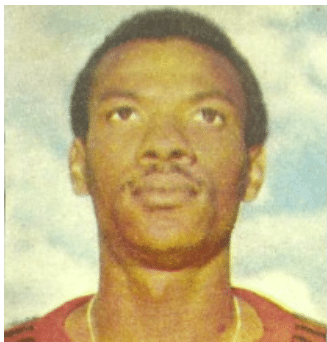
MARION LEANDRE
The call to the Grail came on November 13, 1971 in Port-au-Prince against Nautico Recife of Brazil, 1-1, penalty by Philippe Vorbe. He followed this up with a start in the Concacaf Qualifiers for the Munich Olympic Games in Trinidad, a qualifying spot out of six teams. While Haiti would end the competition with an excellent 2nd place, behind Mexico, enhanced by the performances of Sanon and Bayonne, each with 3 goals, and Vorbe elected MVP of the tournament, bad luck, Marion Léandre had to abandon her teammates because of a broken jaw during the second match against Honduras (3-1, Bayonne, Sanon, Tom Pouce).
Once healed, without being a starter, highlighted in a sprightly Racing team that dominated the 1972 Pradel Cup, he was recalled to the National Team. Moreover, on December 14, 1972 in Port-au-Prince, in a friendly match, he scored one of the three goals against Curaçao, the other two having been the work of Manno Sanon. It was only a bright spot in a laborious climb up the steps. A lot of sweat and blood. Swimming against the current for a place in the sun. Indeed, various circumstances pushed Tassy to convert Pierre Bayonne to right-back. Competing with this monster is like challenging an elephant on the field of strength. And when the cumulative unavailability of Vorbe in midfield and Jean-Joseph in defense seemed to open up a starting place for him in the crucial first match of the Pre-World Cup, December 1, 1973 against Curaçao, a groin injury handicapped our good Marion. Nevertheless, “there is a god for the unfortunate.” In Tassy’s eyes, Bayonne being indispensable in midfield in the absence of Vorbe, or in attack alongside Sanon, the right-back position was available for the technical finesse of Wilfrid Louis of Don Bosco or the athletic presence of Marion Léandre of Racing. The cortisone treatment from Doctor Rosarion having put Marion in a fit state to play, Tassy started him for the three matches against Guatemala, Honduras and Mexico.
To get there, he had made himself the judge: working alone on his friendship with the ball. His dribbling is approximate: he avoids carrying the ball, always favors the pass, unless he can use the big bridge at the back of the field to center. His running speed rarely matches that of his opponents: he does not leave space behind him, he anticipates, adopts the recoil-brake. Above all, his physical condition must be impeccable. A maniac, he sometimes wakes up in the middle of the night with a start and works his abs, pectorals and squats. His most feared opponents? At the beginning of his career in Port-au-Prince, Manassé of Excelsior. After 1974, Gary Perrin of Victory and Jean Joseph Mathelier of Violette. The real opponent who could have made Marion Léandre look like a clown, he is Uruguayan and his name is Ruben Corbo. On June 6, 1973, Haiti hosted Uruguay at the Sylvio Cator stadium. Two hours before the match, coach Tassy, not a psychologist in the least, frightened the Racing right-back with these words: “Mario, ou toujou ap di se gwo aryè ou ye, fè m wè sa: aswè a ou pral make yon elye goch ki drible le monde entier…!” The defender lost his senses on the spot. Throughout the first half, Corbo tormented Marion to the point that the same Tassy – prepare your burst of laughter – shouted at him from the bench: “Marion, si w renmen Blan an, bo l non!” And if the half-time, indeed the whole match, ended 0-0, it was thanks to an exceptional Wilner Nazaire who plugged all the gaps in the Haitian defense. In this register, Marion readily cites the American left winger Mark Liveric of the Cosmos whom he faced in the summer of 1975 in the ranks of the Victory who had called him as reinforcement on the occasion of its 30th Anniversary International Tournament bringing together, in addition to the Victory itself, New York Cosmos, Miami Toros and Violette.
For those who know how to analyze, this episode in Marion Léandre’s career takes on the meaning of an absolute accomplishment. Of course, if the Violette had not been invited to the competition, we can bet that Franck Civil would have requested the services of Pierre Bayonne to compensate for the weakness of the right flank of his defense. No matter, in such a high-level tournament, finding favor with the legendary technical requirements of coach Franck Civil is to obtain a university degree summa cum laude. Franck also had to weigh the player’s discipline, his experience and his rectitude. In 16 years of career, as a rough defender, not a single red card. This profile would match well with the profession of coach. Mario became one through training in Mexico and various internships with Fifa or the Olympic Committee, until he graduated from Fifa as a Trainer of Trainers in football training. Although he had several stints as assistant to Piontek and Tassy in the National Team and coached Racing, Don Bosco, All Cap, Carioca, it was his Bacardi from 1979-1981 that remained his master class. He was then an outstanding showman, winning his matches with panache and holding his players back for an active return to calm from the final whistle, thus applying to the letter one of his many formulas: “At the final whistle of the previous match begins the next one”.
Having done all this and finding the mental and emotional disposition to know how to love Rose-Mary Henry, to marry her, all with Port-au-Prince as a witness and to see in the eyes of three children, Mario, Moïse, Myriam, reflect the image of a united family, is to honor his professions as a football player and coach and to propose himself as the incarnation of work that pays.
By Patrice Dumont
November 28, 2022
Le Nouvelliste
